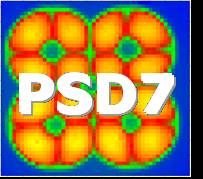Speaker
Mr
Adrian Martindale
(University of Leicester)
Description
We describe the operation of ultra-small pore Microchannel Plates
(MCPs) as detectors for soft X-ray radiation. These new plates
represent a marked improvement in MCP technology. Typical plates at
present have pore diameters of ~8-12μm, whereas the new generation
have diameters ranging from 3-6μm. This reduction in pore diameter
will clearly have a positive impact on the spatial resolution of a
detector with MCP limited imaging capabilities. In addition, the
reduced pore diameter will also improve the timing characteristics
of the detector (reduced rise time and pulse width) as described
theoretically by Fraser et al 1990 and references therein. Burle
Electro-Optics have recently reported a 2μm MCP but have not
investigated it for X-ray photon counting, only as a time of flight
ion detector. They find pulse widths of <400ps and rise time of
<200ps.
Our work represents the first investigation of ultra small pore
detectors in saturated mode for X-ray imaging. We report, pulse
counting and timing capabilities of 6, 4.5 and 3.2μm Photonis MCPs
operated in saturated (photon counting) mode using a standard
electron bombardment X-ray source to produce the required X-ray
lines (C-K - 0.28keV, Cu-L - 0.93keV and Si-K - 1.74keV).
Primary author
Mr
Adrian Martindale
(University of Leicester)
